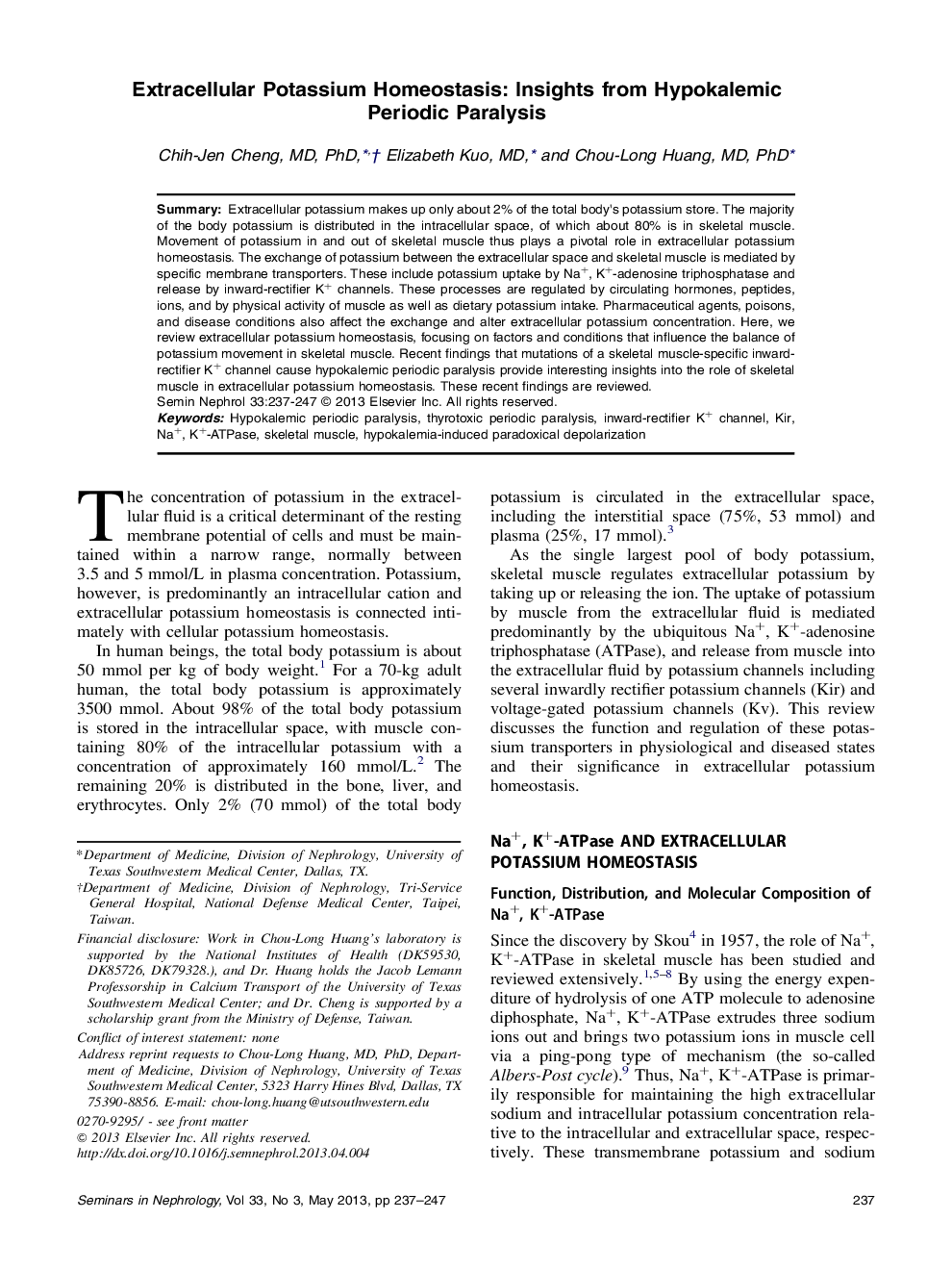| Article ID | Journal | Published Year | Pages | File Type |
|---|---|---|---|---|
| 3896576 | Seminars in Nephrology | 2013 | 11 Pages |
Abstract
Extracellular potassium makes up only about 2% of the total body's potassium store. The majority of the body potassium is distributed in the intracellular space, of which about 80% is in skeletal muscle. Movement of potassium in and out of skeletal muscle thus plays a pivotal role in extracellular potassium homeostasis. The exchange of potassium between the extracellular space and skeletal muscle is mediated by specific membrane transporters. These include potassium uptake by Na+, K+-adenosine triphosphatase and release by inward-rectifier K+ channels. These processes are regulated by circulating hormones, peptides, ions, and by physical activity of muscle as well as dietary potassium intake. Pharmaceutical agents, poisons, and disease conditions also affect the exchange and alter extracellular potassium concentration. Here, we review extracellular potassium homeostasis, focusing on factors and conditions that influence the balance of potassium movement in skeletal muscle. Recent findings that mutations of a skeletal muscle-specific inward-rectifier K+ channel cause hypokalemic periodic paralysis provide interesting insights into the role of skeletal muscle in extracellular potassium homeostasis. These recent findings are reviewed.
Related Topics
Health Sciences
Medicine and Dentistry
Nephrology
Authors
Chih-Jen MD, PhD, Elizabeth MD, Chou-Long MD, PhD,
